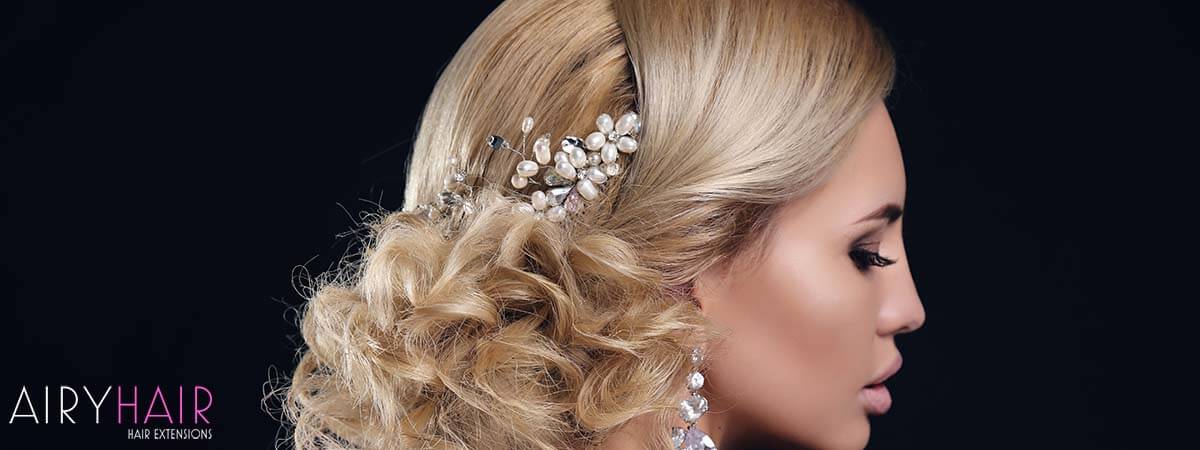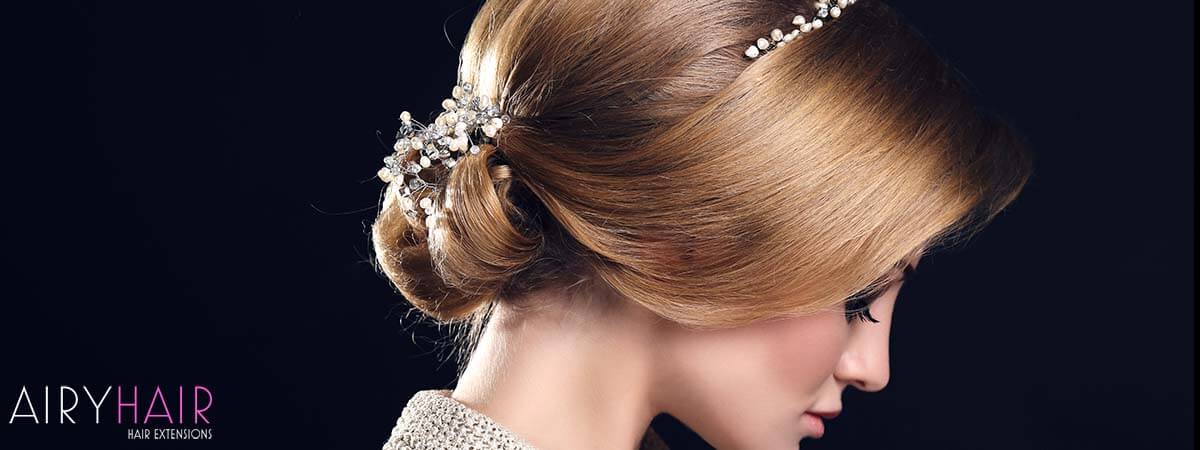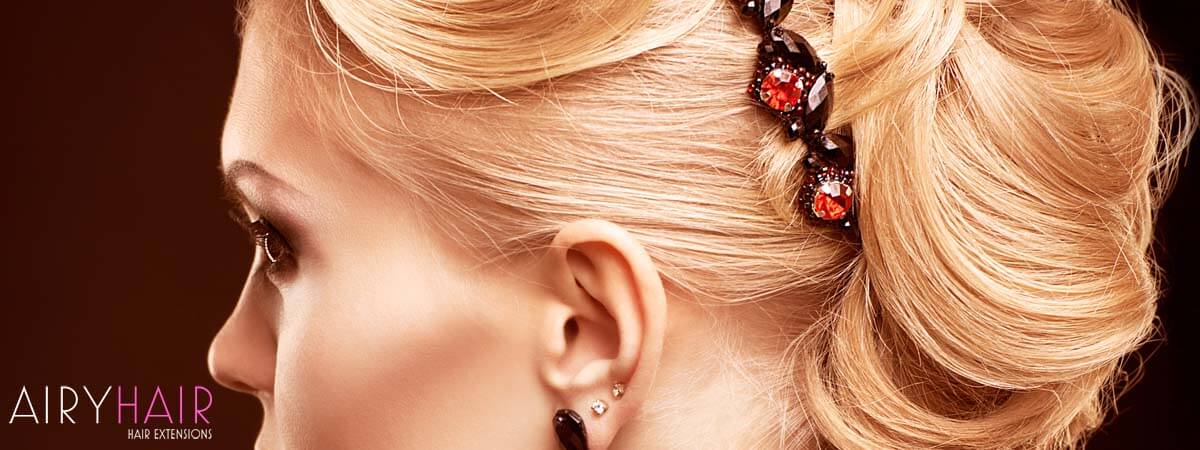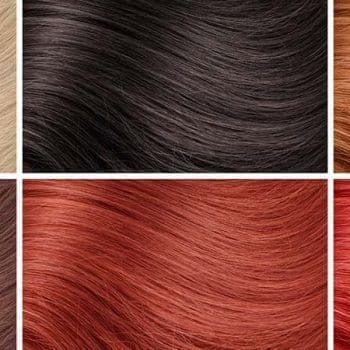Sewing hair extensions has been a popular method for a long time, and you might also know it as a weave. That’s the easiest and cheapest way to transform and revive your hair. Many celebrities successfully use this technique to achieve stunning results. Just imagine having long, silky locks that you can style however you want to.
Since sewing extensions don’t require tape, glue, or heat, it is often done at home. That also saves a lot of money and time. All you need is a thread and a cheap needle. That is a big advantage of sew-in extensions, hence their popularity.
Unlike other extension types, a weave consists of wefts of hair that are cut into smaller pieces and sewn in. The cool thing is that you can control the density and fullness of the weave! Increase the number of wefts you put in and call it a day. So, if you want extra-voluminous and full hair, that’s a breeze with sew-in hair extensions.
Quick Access
Preparation First
The first thing you need to do is buy the wefts. Many online stores have a wide range of different wefts. Some are made from real hair, and some are synthetic. Human hair Remy wefts are a bit more expensive, but you’re getting top-quality hair. Something that will be indistinguishable from your natural tresses and soft to the touch. You can reuse Remy wefts and wear them for at least 5 months.
Next, choose the desired texture (straight, wavy, or curly) and pick a color that matches the natural one. If you want to save some money, sew the wefts yourself.

When the chosen wefts have arrived, it is time to sew them in. We’re going to show you the easiest method of attaching them. The only tools that you need are a curved needle, a thread, and wefts. If this is your first time, you might ask a friend for help. Let’s start!
Step 1
It is best to start by preparing your natural locks. Wash your hair and brush it afterward because you want the strands to be perfect before sewing the wefts in. If you are sewing hair without braids, scroll down a bit.
Step 2
Now is the time to make cornrows. It is the simplest way to attach the wefts. Start braiding the hair from front to back and ensure the cornrows aren’t too thick and bulgy. You can achieve that by taking smaller strands and braiding them. When you’re done braiding, secure the ends.
Step 3
Thread the needle and prepare the wefts for sewing. You need to measure and cut the weft into smaller pieces. Measure according to the cornrows because each braid will have one piece of weft attached to it. To increase the volume, fold the weft to make it double.
Step 4
Start on one side of the head and make the first stitch at the front. Remember to leave about half an inch of space at the beginning and end of the cornrow. Otherwise, the wefts might be visible.
The curved needle should make it easy to go through the braid and piece of hair. Make sure that the first stitch is very tight and secure. Continue sewing along the braid, moving to the back of the head. When you reach the end of the braid, make a couple of stitches to secure the weft.
Step 5
Now that the first weft is in place, you will find that it gets easier as you go along. Move to the next braid and repeat the whole process. Make sure that the stitches are nice and neat. And that’s it; the weave is done.

Most people think that the only way to sew in hair extensions is by braiding the hair first. Although that’s most common, there are other ways that you can sew in extensions. There is braidless sew-in, which is also known as the Malaysian weave.
Consider Some Negatives First
Although braiding is a great way to do it, there are some downsides. The obvious one is that you will need more wefts. This is because extensions are not blended with natural hair. That also makes it more expensive.
Another negative side of a weave on braided hair is that it can be harsh on the scalp and might be painful. Weaves can also look bulky and weird because of the cornrows, which makes the whole look seem unnatural.
Learning About Braids
How does the braidless sew-in method work anyway? You have a track, which is made using a thread and needle. Then, the wefts are sewn onto it. It’s not hard to do, and it takes just a bit longer than a cornrow weave.
If you want to learn how to sew hair extensions without braids, follow this simple tutorial!
Step 1
Before you start sewing, wash and dry your hair. Don’t sew in your wefts on dirty hair.
Step 2
Thread the needle and make a small knot at the end. Now, make a horizontal parting from the top of one ear to the other. Clip the top part of the hair and move it out of the way.
Step 3
Next, you need to keep track of where the parting is. Take the curved needle and loop it under the parting. Go very close to the roots, and as you pull the thread, don’t let the knot go through!
Pass the needle again and pull it through the loop to create a knot. Continue doing that from the left side of the parting to the right. Make sure that the thread is tight and secure. This creates a nice track for the wefts.
Step 4
Now, you should have an even row of knotted hair and measure it to know how long the weft should be.
As you go from the left, start sewing the weft onto the knots you have just completed. Make tight stitches and ensure that everything is secure. When you reach the right side, make a couple of final knots. The first weft is now in place.
Step 5
Make another parting above the first one, leaving about an inch of space between them. Repeat the last two steps.
Continue further up the head until you have reached the desired outcome. And that’s how you sew in hair extensions without braids!

Like all other types, weave extensions also need care and maintenance. There’s nothing worse than a dry, matted weave that looks like a bad wig.
Depending on your hairstyle, you can cut the new hair to make it blend even more seamlessly. Maintaining sew-in extensions is also very important, so make sure to follow these tips.
Be more careful than usual as you wash your hair. One should not even use shampoo while washing hair extensions. Please see our article about hair extensions care for all the juicy bits.
Also, do not use too much product on the hair or hot tools. Yes, a friend might have told you otherwise, but don’t listen to this advice. Heat can damage the wefts and significantly shorten their lifespan. Before going to bed, braid the strands or wear a sleep cap.
This will protect the wefts from damage as you toss and turn in your sleep. Grab a satin pillowcase, too, because these will reduce the friction. Lastly, saltwater and pool water can be very harmful to the wefts! Make sure to wear a swimming cap.
Since the wefts don’t receive any natural nutrients from the skin, you need to replenish them by using a conditioner. Also, don’t pull too hard or tug on the wefts because you might end up with a detached weave, and that’s not a pretty sight.
That’s it!







